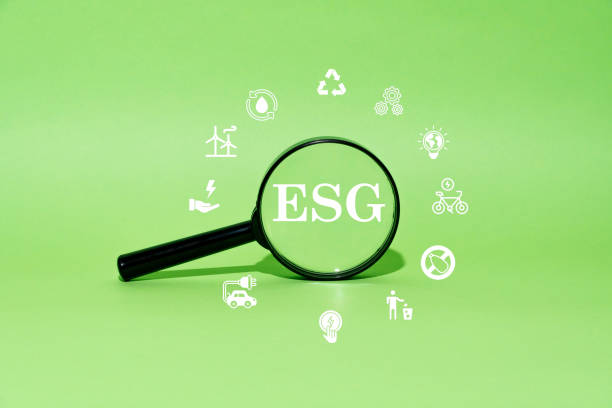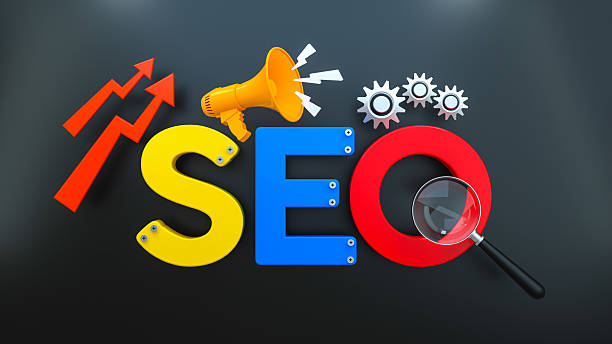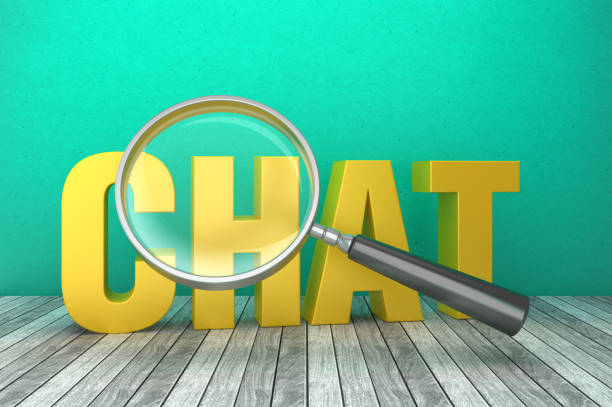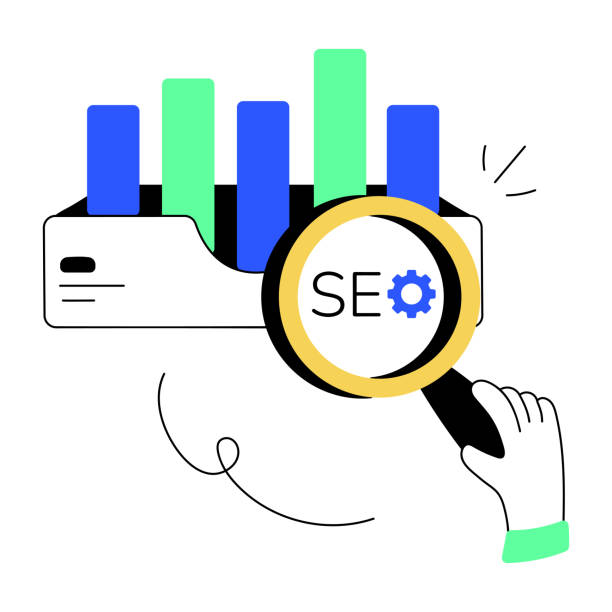What is On-Page SEO and Why is it Important?

On-Page SEO, also known as On-Page SEO, is a set of techniques and actions performed within your website to improve your site’s ranking in Google and other search engine results.
This includes optimizing content, site structure, HTML tags, and other factors that help search engines better understand your site and show it to relevant users.
The importance of On-Page SEO is that it forms the foundation of your site’s ranking.
Without a strong On-Page SEO strategy, your efforts in #Off-Page SEO and content marketing will not be effective enough.
By optimizing On-Page SEO, you show search engines that your site is relevant, authoritative, and valuable, leading to increased ranking, traffic, and ultimately, converting users into customers.
In fact, On-Page SEO helps you have more control over your site’s ranking and ensure that your site is properly optimized for target keywords.
By doing these actions correctly, you can outperform your competitors and gain a better position in search results.
For more information about SEO and website optimization, you can visit Wikipedia.
Did you know that 85% of customers check your company’s website before any interaction?
With Rasaweb, build a corporate website that deserves your reputation.
✅ Increase customer credibility and trust
✅ Attract quality leads
⚡ Get free website design consultation
Keyword Research and Choosing the Best Ones

Keyword research is one of the most important steps in On-Page SEO.
Choosing the right keywords helps you optimize your content to be found by users looking for relevant information.
To get started, you need to identify keywords relevant to your business and content.
There are various tools available for this, including Ahrefs, Moz Keyword Explorer, and Ubersuggest.
These tools provide you with information on search volume, competition, and related keywords.
You can also use Google Keyword Planner as a reliable source.
After identifying keywords, you should prioritize them based on the level of competition and search volume.
Keywords with low competition and medium search volume are usually good options to start with.
Also, remember to use Long-Tail Keywords, as these keywords usually have higher conversion rates.
For example, instead of using the keyword “sports shoes,” use the phrase “best sports shoes for running in Tehran.”
Proper and principled use of keywords is one of the basic principles of On-Page SEO.
Optimizing Page Title (Title Tag) and Meta Description

The page title (Title Tag) and meta description (Meta Description) are two important elements in On-Page SEO that help search engines and users understand the content of your page.
The page title is the title that appears in the browser tab and in the search results.
The meta description is a short description that appears below the page title in the search results.
To optimize the page title, you should use your main keyword at the beginning of the title and keep the title length less than 60 characters so that it is fully displayed in the search results.
Also, the title should be attractive and relevant to the content of the page to encourage users to click.
For the meta description, you should provide a brief and attractive description of the page’s content and use your main keyword in it.
Keep the meta description length between 150 and 160 characters.
A good meta description can significantly increase your click-through rate (CTR).
On-Page SEO pays special attention to these details.
In this section, we provide a table for example for the page title (Title Tag) and meta description (Meta Description):
| Element | Description | Example |
|---|---|---|
| Title Tag | Page title, maximum 60 characters | Buy Sports Shoes Online | Free Shipping |
| Meta Description | Brief description, maximum 160 characters | Buy the best sports shoes with free shipping from our store. High variety, affordable prices and guaranteed quality. |
Optimizing URL Structure

The URL structure plays an important role in On-Page SEO.
Optimized URLs should be short, descriptive, and include relevant keywords.
Long and complex URLs can be confusing for search engines and users.
Try to design your URLs to be easily readable and memorable.
For example, instead of using a URL like `www.example.com/page?id=123`, use a URL like `www.example.com/buy-sports-shoes`.
Using a hyphen (-) to separate words in the URL is recommended.
Also, avoid using uppercase letters and special characters in your URL.
A regular and logical URL structure helps search engines better understand your site’s structure and also helps users understand what page they are on.
This ultimately leads to improved user experience and increased site ranking.
On-Page SEO helps improve user experience.
Are you worried that your company’s old website will drive away new customers? Rasaweb solves this problem with a modern and efficient corporate website design.
✅ Increases your brand credibility.
✅ Helps to attract targeted customers.
⚡ Contact Rasaweb for a free consultation!
Optimizing Images with Alt Text

Images play an important role in the attractiveness and better understanding of your content.
However, search engines cannot see images like humans.
For this reason, you should optimize your images with Alt Text.
Alt Text is text that is displayed instead of the image if it is not displayed.
Also, Alt Text helps search engines understand the content of the image.
To optimize images, you should use descriptive and relevant Alt Text to the image content.
Use your main keywords in Alt Text, but avoid filling Alt Text with keywords.
Also, optimize the image file size to increase your page loading speed.
There are various tools available for compressing images, including TinyPNG and ImageOptim.
By optimizing images, you can improve user experience and help search engines better understand your content.
This is one of the important aspects of On-Page SEO.
Content Optimization and Keyword Usage

Content is king! This phrase has been repeated over and over again in the world of SEO, and for good reason.
High-quality and relevant content not only attracts users, but also shows search engines that your site is authoritative and valuable.
To optimize content, you should organize your content in a way that is easy to read and understand.
Use titles and subtitles to divide the content and use short paragraphs and simple sentences.
Also, you should use your keywords naturally in the content.
Avoid filling content with keywords, as this can lead to your site being penalized by search engines.
Instead, try to strategically use your keywords in the title, subtitles, paragraphs, and alt text of images.
Also, remember to update your content regularly and create new and relevant content.
Fresh and high-quality content is one of the most important factors in On-Page SEO.
Correct internal linking is also important.
Optimizing Page Loading Speed

Page loading speed is one of the important factors in your site’s ranking in search engines.
Users expect web pages to load in a few seconds, and if your page loads slowly, the likelihood that users will leave your site is very high.
To optimize page loading speed, you should optimize image file sizes, use Content Delivery Networks (CDNs), and compress your HTML and CSS code.
Also, you can use various tools such as Google PageSpeed Insights and GTmetrix to identify the speed problems of your site and find solutions to improve it.
A fast and smooth site not only improves user experience, but also shows search engines that your site is optimized and valuable.
Don’t underestimate this vital aspect of On-Page SEO.
In this section, we provide a table for example for page loading speed:
| Variable | Optimal Value | Description |
|---|---|---|
| Page Loading Speed (First Byte) | Less than 200 milliseconds | Time required to receive the first byte from the server |
| Complete Page Loading Time | Less than 3 seconds | Time required to fully load all elements of the page |
| Page Size | Less than 2 megabytes | Total size of page files |
Internal Linking and Site Structure

Internal linking means creating links between different pages of your site.
Internal linking helps search engines better understand your site’s structure and also helps users easily navigate your site.
For internal linking, you should use text links that are relevant to the content of the destination page.
Avoid using image links and links that point to irrelevant pages.
Also, you should create a regular and logical site structure.
Your site structure should be such that users can easily access any page they want.
Avoid creating orphan pages (pages that have no links to them) and make sure that all important pages of your site are accessible from the homepage.
Internal linking and a regular site structure play an important role in On-Page SEO.
Are you bothered by losing customers who have come to your site to buy?
Rasaweb is your specialized solution for having a successful online store.
✅ Significantly increase your online sales
✅ Creating trust and professional branding with customers⚡ Get free advice from Rasaweb experts!
Optimizing for Mobile (Mobile-Friendly)

Today, most users access the Internet through mobile devices.
For this reason, optimizing your site for Mobile-Friendly is very important.
A Mobile-Friendly site should be designed to be easily viewed and used on mobile devices.
To optimize your site for mobile, you should use Responsive Design, increase font sizes, and use large, touchable buttons.
Also, you should optimize your page loading speed on mobile devices.
Google gives a better ranking to sites that are Mobile-Friendly.
Optimizing for mobile is a vital aspect of On-Page SEO in today’s world.
A site that is not optimized for mobile will lose a lot of audience.
Using Structured Data (Schema Markup)

Structured data (Schema Markup) is a code that helps search engines better understand the content of your page.
Using structured data, you can provide information about your product, event, article, or other types of content to search engines.
This information can help search engines display richer search results (Rich Snippets), which can increase your click-through rate (CTR).
To use structured data, you can use various tools such as Schema.org.
Using structured data is a great way to improve your site’s On-Page SEO and increase its visibility in search results.
Distinguish your site with structured data and help search engines.
Frequently Asked Questions
| Question | Answer |
|---|---|
| What is On-Page SEO? | On-Page SEO includes optimizing elements that are directly in your control and within your website. Its goal is to help search engines better understand page content and improve its ranking. |
| Why is On-Page SEO important? | On-Page SEO gives search engines clear signals about page content, improves user experience, and increases the chance of attracting organic traffic. |
| What are the most important On-Page SEO factors? | Keywords, Title Tag, Meta Description, URL structure, quality content, image optimization, and internal links are among the most important factors. |
| What is the role of the Title Tag in On-Page SEO? | The Title Tag is one of the most important signals for search engines and users that specifies the main topic of the page. It should include the main keyword and be attractive. |
| How important is Meta Description? | Meta description does not directly affect ranking, but it can improve click-through rate (CTR) by encouraging users to click. |
| How to optimize images for On-Page SEO? | By using a descriptive file name, appropriate Alt Text containing keywords, compression to reduce size and correct dimensions. |
| What is the impact of Internal Links on SEO? | Internal links help search engines discover and index site pages, distribute authority (PageRank) throughout the site, and improve user navigation. |
| Is page loading speed a factor in On-Page SEO? | Yes, page loading speed is a critical factor in On-Page SEO and user experience. Slower pages can lead to higher bounce rates and lower rankings. |
| What are the features of quality content for On-Page SEO? | Quality content should be comprehensive, unique, relevant, reliable, readable, and fully answer user needs and questions. |
| How can keywords be used in content? | Keywords should be used naturally in the title, subtitles, first paragraph, body text, and Alt Text of images. Avoid Keyword Stuffing. |
And other services of Rasa Web advertising agency in the field of advertising
Smart Digital Branding: A combination of creativity and technology to increase site visits by using real data.
Smart Data Analysis: Professional optimization for digital branding using an SEO-based content strategy.
Smart Brand Identity: Professional optimization for customer behavior analysis using an SEO-based content strategy.
Smart SEO: An effective tool to attract customers by using real data.
Smart Brand Identity: An exclusive service to increase click-through rates based on attractive user interface design.
And more than hundreds of other services in the field of internet advertising, advertising consulting and organizational solutions
Internet Advertising | Advertising Strategy | Advertorial
Resources
On-Page SEO Optimization in Moz
,On-Page SEO Guide in Search Engine Journal
,On-Page SEO: A Complete Guide for 2023 in Ahrefs
,What is SEO? A Basic Guide in Yoast
? Are you ready to grow and shine your business in the digital world? Rasaweb Afarin Digital Marketing Agency paves the way for your success by providing comprehensive and professional services including dedicated website design, Search Engine Optimization (SEO), and content marketing strategies. Build a bright future for your brand with us and take a big step towards progress.
📍 Tehran, Mirdamad Street, next to Central Bank, South Kazerun Alley, Ramin Alley No. 6




